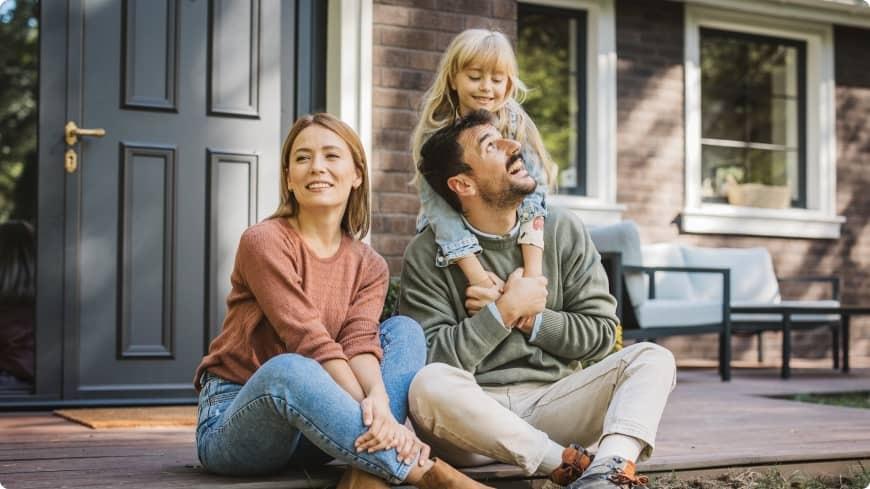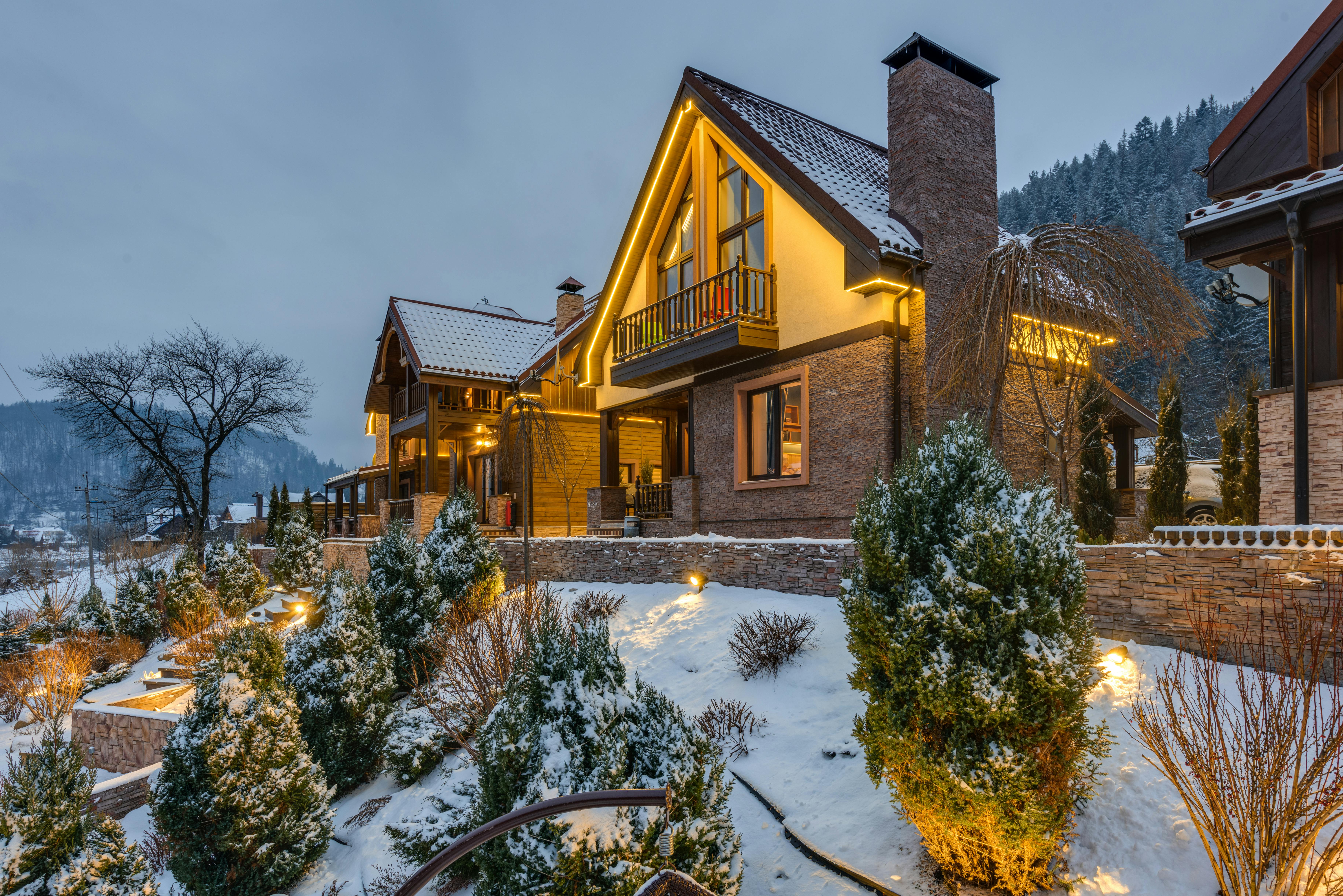How Much Home Can I Afford With a 20% Down Payment?

When you’re ready to buy a home, one of the first questions that comes to mind is, “How much home can I afford with a 20% down payment?”
It’s a great starting point because the size of your down payment directly impacts the monthly mortgage payment, interest rate, and loan amount. Let’s dive into how this works and what it means for your financial situation.
Do Mortgages Require a 20% Down Payment?
Contrary to what some may believe, a 20% down payment isn’t a requirement for all home loans. Many types of loans, such as FHA loans and VA loans, have different down payment requirements.
FHA loans, insured by the Federal Housing Administration, often only require a minimum down payment option of 3.5%, making homeownership more accessible for first-time buyers.
Similarly, VA loans, which are backed by the Department of Veterans Affairs, may offer zero down payment options for eligible veterans. These options can make entering the housing market more attainable for a wider range of borrowers.
Does a 20% Down Payment Increase My Chances of Loan Approval?
Yes, it can. Lenders see a larger down payment as a sign of a strong financial situation, which makes you a lower-risk borrower.
This can increase your chances of being approved for a mortgage, especially if your credit score is less than stellar.
Having a solid down payment is particularly important if you’re applying for a jumbo loan, as these loans often come with stricter requirements.
What Types of Mortgages Favor a 20% Down Payment?
Conventional loans are a good match for a 20% down payment. These loans typically offer better mortgage rates and terms for those putting down at least 20%.
For jumbo loans, which apply to home prices above conventional limits, a larger down payment is often required. Understanding the type of loan that suits your financial situation can simplify the home buying process.
What Are the Benefits of Putting 20% Down on a Mortgage?
A 20% down payment offers several advantages. For one, it can eliminate the need for private mortgage insurance (PMI), which is an extra cost typically required if you’re putting down less than 20%.
Avoiding PMI lowers your overall monthly mortgage payment, making home ownership more affordable in the long run.
A large down payment can also increase your chances of loan approval, especially in a competitive housing market.
How Does a Larger Down Payment Affect Loan Terms?
Putting down more money upfront not only helps lower your monthly mortgage payments but can also get you better mortgage rates.
Lenders typically view a larger down payment as less risky, leading to lower interest rates. The end result? You save money over the life of the loan, enjoy lower monthly payments, and build more home equity faster.
This is especially beneficial in real estate markets with higher interest rates, as your savings can be substantial.
How Does 20% Down Reduce Overall Interest Costs?
With a 20% down payment, you’ll generally secure a lower mortgage interest rate compared to smaller down payments.
A lower interest rate could also result in a lower monthly mortgage payment, giving you more flexibility in personal finance.
For fixed-rate loans, this benefit is even more pronounced, as your payments will remain stable throughout the loan term.
Can a 20% Down Payment Help Me Avoid PMI?
Absolutely! PMI is usually required when your down payment is less than 20% of the home purchase price. This insurance protects the lender if you default on your loan, but it increases your overall monthly payment.
With a 20% down payment, you can bypass PMI entirely, allowing you to put that money toward your mortgage instead. PMI can cost hundreds of dollars per month, so avoiding it helps you keep more of your money.
How Much Does Private Mortgage Insurance Cost?
PMI typically costs between 0.3% and 1.5% of your loan amount annually, depending on your down payment and credit score. For example, on a $300,000 loan, PMI could add $75 to $375 to your monthly mortgage payment.
How Can First-Time Buyers Save for a 20% Down Payment?
First-time homebuyers can start saving by opening a dedicated savings account, setting up automatic transfers, and exploring down payment assistance programs.
There are state-specific programs designed to help first-time buyers accumulate a larger down payment.
Additionally, reducing high-interest debt, such as credit card balances, can free up more income for savings.
20% Down Payment on Different Priced Homes
How Much Is 20% Down on a $300K Home?
For a $300,000 home, a 20% down payment would be $60,000. This means you’d be financing $240,000, which would result in lower monthly mortgage payments and less interest paid over the loan’s term.
It’s also worth noting that your upfront closing costs would be lower with a larger down payment. By putting more down, you can also avoid falling victim to higher interest rates often seen in the housing market.
How Much Is 20% Down on a $400K Home?
On a $400,000 home, a 20% down payment equals $80,000. This amount might seem high, but it significantly reduces your monthly mortgage payment.
Additionally, you’ll save on PMI and could even qualify for a lower mortgage interest rate, depending on your credit score and financial history. Your monthly payment will also be more predictable if you opt for a fixed-rate mortgage.
How Much Is 20% Down on a $500K Home?
For a $500,000 home, a 20% down payment is $100,000. While it’s a substantial amount, the benefits are clear: you’ll have lower monthly payments.
Plus, with $100,000 in home equity from the start, you’ll be in a stronger financial position right away. This can be especially advantageous if you decide to refinance later to secure even lower monthly payments.
How Much Is 20% Down on a $600K Home?
A 20% down payment on a $600,000 home is $120,000. Making this investment upfront can save you a lot in interest over the life of the loan, and it positions you well for future refinancing opportunities if needed.
This also allows you to navigate fluctuations in home values more comfortably.
How Much Is 20% Down on a Million-Dollar Home?
For a million-dollar home, a 20% down payment is $200,000. This down payment not only avoids PMI but also lowers your monthly mortgage payments significantly.
Jumbo loans, which are often used for high-value properties, typically require larger down payments, so a 20% down payment is usually the minimum in such cases.
Additionally, jumbo loans might come with slightly higher interest rates, making a larger down payment beneficial.
What Are the Alternatives to a 20% Down Payment?
One strategy is to use a HELOC (Home Equity Line of Credit) on your existing home to fund the down payment for your new home.
This options make it easier to buy a home without waiting to save up 20%.
Loan Options With Less Than 20% Down Payment
If a 20% down payment feels out of reach, don’t worry, you aren’t alone. According to National Association of Realtors, for first-time home buyers, 38% said saving for a down payment was the most difficult step in the process.
Most may not know that there are plenty of alternatives. You can choose an FHA loan, USDA loan, or even a conventional mortgage with a lower down payment amount.
Each loan program has different down payment requirements. For instance, USDA loans, which are designed for rural homebuyers, don’t require a down payment at all.
There are also conventional mortgage options that allow for as little as 3% down for qualified borrowers. Fannie Mae and Freddie Mac offer these loan programs, making it easier for first-time homebuyers to secure financing.
What Happens if You Don't Put 20% Down on a House?
If you don’t put 20% down, you’ll likely need to pay PMI, which increases your monthly payments. Additionally, you might have higher interest rates and pay more over the loan’s life, but homeownership is still achievable with less down.
Are There Any Zero-Down Mortgage Options Available for Homebuyers?
Yes! VA loans (for veterans) and USDA loans (for rural properties) offer zero-down payment options.
Both programs have eligibility requirements, but they make homeownership possible without needing to save for a large down payment.
How Can I Get Pre-Approved for a Mortgage?
Getting pre-approved is an essential step in the home buying process. It involves submitting an application to mortgage lenders, providing financial documents, and having your credit score evaluated.
Once you’re pre-approved, you’ll know your loan amount, estimated monthly mortgage payments, and available interest rate options.
As a homeowner, understanding your financial situation is key to finding the right mortgage loan that fits your needs.
How Does Pre-Approval Differ From Pre-Qualification?
Pre-qualification is a basic estimate of what you can afford, while pre-approval involves a more detailed review of your financial situation by a lender.
A pre-approval gives you a stronger position when making an offer on a home.
What Credit Score Is Required to Buy a House?
Conventional loans have flexible credit requirements that vary by lender and loan scenario. However, FHA loans often accept scores as low as 580, and VA loans might not have a set minimum, but a higher score improves your rates.
Ready to Make Your Homeownership Dream a Reality?
Putting a 20% down payment on a home can make a huge difference—whether it’s lowering your monthly mortgage payments or avoiding the hassle of PMI. It’s a smart move for long-term financial stability and peace of mind.
Guaranteed Rate, Inc. is a private corporation organized under the laws of the State of Delaware. It has no affiliation with the US Department of Housing and Urban Development, the US Department of Veterans Affairs, the US Department of Agriculture, or any other government agency.




